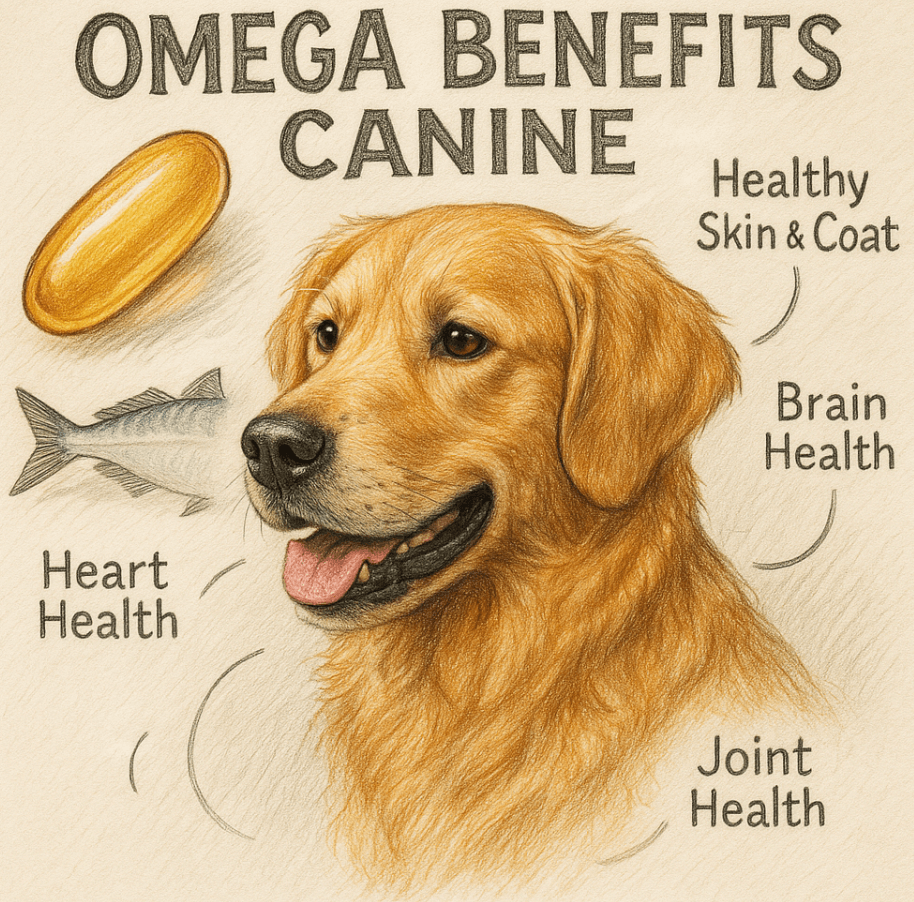Understanding Simethicone Dosage for Dogs: A Comprehensive Guide
When it comes to our furry companions, their health and well-being are always a top priority. One common issue that dogs may face is gas or bloating, which can cause discomfort and even lead to more serious complications if left untreated. Simethicone, a medication often used to relieve gas in humans, can also be administered to dogs under the guidance of a veterinarian. However, determining the correct simethicone dosage by weight for your dog is crucial to ensure both safety and effectiveness.
In this blog post, we’ll explore everything you need to know about using simethicone for dogs, from understanding its purpose to calculating the right dosage based on your pet’s weight. Whether you’re a seasoned dog owner or new to pet care, this guide will provide valuable insights to help you make informed decisions for your canine companion.
Key Benefits of Simethicone for Dogs
Simethicone is widely recognized for its ability to alleviate gas-related discomfort in dogs. Below, we outline some of the key benefits of using this medication for your pet:
Reduces Gas Bubbles: Simethicone works by breaking down large gas bubbles in the digestive tract, making it easier for your dog to pass gas naturally.
Alleviates Discomfort: By reducing trapped gas, simethicone can significantly ease abdominal pain and bloating, allowing your dog to feel more comfortable.
Non-Toxic Formula: Unlike some medications, simethicone is considered safe for dogs when administered in the correct dosage, providing peace of mind for pet owners.
Fast-Acting Relief: Many dogs experience relief within minutes to hours after taking simethicone, making it an effective solution for sudden gas issues.
Versatile Use: This medication can be used for various causes of gas, including dietary indiscretion, stress, or underlying gastrointestinal conditions.
In summary, simethicone offers a range of benefits that make it a reliable option for managing gas-related issues in dogs. Always consult your veterinarian before starting any new treatment to ensure it’s appropriate for your pet’s specific needs.
Factors to Consider When Determining Simethicone Dosage
Calculating the correct simethicone dosage by weight for your dog involves considering several important factors. Here’s what you need to keep in mind:
Dog’s Weight: The dosage of simethicone is directly proportional to your dog’s weight. Smaller dogs require smaller doses, while larger breeds need higher amounts to achieve the desired effect.
Severity of Symptoms: If your dog is experiencing mild gas, a lower dose may suffice. However, more severe cases might require a slightly higher dosage as advised by your vet.
Form of Simethicone: Simethicone is available in various forms, such as liquid, tablets, or chewable capsules. The form you choose can influence how the dosage is calculated and administered.
Underlying Health Conditions: Dogs with pre-existing health issues, such as liver or kidney problems, may require adjusted dosages to avoid potential complications.
Veterinary Guidance: Always rely on professional advice when determining the appropriate dosage. Veterinarians can provide tailored recommendations based on your dog’s unique health profile.
By taking these factors into account, you can ensure that your dog receives the correct amount of simethicone for optimal results. Remember, precision is key when it comes to medicating your pet.
Check this guide 👉How Much Omeprazole Can I Give My Dog? Best 7 Expert Tips!
Check this guide 👉How Much Amoxicillin Should You Give Your Dog? Best 7 Tips!
Check this guide 👉Can I Give My Dog Cetirizine? Best 7 Expert Tips!

Factor to Consider | Why It Matters |
|---|---|
Dog’s Weight | Ensures the dosage is proportionate to your dog’s size. |
Form of Simethicone | Different forms may require different measurement methods. |
Severity of Gas Symptoms | Helps determine whether a higher or lower dose is needed. |
Underlying Health Conditions | Prevents potential interactions or complications. |
Veterinary Advice | Provides expert guidance tailored to your dog’s needs. |
Common Signs That Your Dog May Need Simethicone
Recognizing the symptoms of excessive gas in dogs is essential for timely intervention. Here are some common signs that indicate your dog might benefit from simethicone:
Abdominal Distension: A visibly swollen or bloated belly is a clear sign of trapped gas in your dog’s digestive system.
Restlessness or Pacing: Dogs often exhibit restless behavior when they’re uncomfortable due to gas buildup.
Excessive Drooling: Increased drooling can be a sign of nausea or discomfort caused by trapped gas.
Frequent Attempts to Pass Gas: If your dog is trying to pass gas but unable to do so, it may indicate a need for simethicone.
Loss of Appetite: Gas-related discomfort can make your dog reluctant to eat, signaling the need for relief.
If you notice any of these symptoms, consult your veterinarian to determine if simethicone is the right solution for your dog.
Tips for Administering Simethicone to Your Dog
Administering medication to a dog can sometimes be challenging, but with the right approach, it can be a smooth process. Here are some tips to help you give simethicone to your dog effectively:
Mix with Food: Hiding simethicone in your dog’s food can make it easier to administer, especially if your dog is resistant to taking medication.
Use a Syringe for Liquids: For liquid simethicone, use a syringe (without a needle) to measure and deliver the exact dosage directly into your dog’s mouth.
Choose Treat-Based Options: Chewable simethicone tablets or flavored options can make the process more appealing to your dog.
Stay Calm and Confident: Dogs can sense your emotions, so remaining calm during administration can help reduce their anxiety.
Reward Good Behavior: Offer a treat or praise your dog after administering the medication to create a positive association.
By following these tips, you can ensure that your dog receives the correct dosage without unnecessary stress.
Common Mistakes to Avoid When Using Simethicone
Administering simethicone to your dog may seem straightforward, but there are a few common mistakes that pet owners should avoid to ensure their dog’s safety and comfort. Here are some pitfalls to watch out for:
Skipping Veterinary Consultation: Many pet owners assume they can determine the correct dosage on their own, but this can lead to under- or overdosing. Always consult your vet before starting treatment.
Using Products with Added Ingredients: Some human simethicone products contain additional active ingredients like pain relievers, which can be harmful to dogs. Stick to vet-approved options.
Ignoring Underlying Causes: While simethicone alleviates symptoms, it doesn’t address the root cause of gas. Persistent gas issues may indicate dietary or health problems that need further investigation.
By avoiding these common mistakes, you can ensure that your dog receives safe and effective treatment. A little extra care goes a long way in keeping your furry friend healthy and happy.
Signs That Simethicone Isn’t Working
While simethicone is effective for most dogs, there are instances where it may not provide the desired relief. Recognizing these signs early can help you take appropriate action. Here are some indicators that simethicone might not be working:
No Improvement in Symptoms: If your dog’s bloating or discomfort persists even after administering simethicone, it could mean the medication isn’t addressing the underlying issue.
Worsening Condition: In rare cases, your dog’s symptoms may worsen, which could indicate an allergic reaction or another unrelated health problem.
Frequent Recurrence of Gas: If your dog experiences gas frequently despite using simethicone, it may be time to reassess their diet or consult your vet for further diagnostics.
If you notice any of these signs, don’t hesitate to contact your veterinarian. They can help determine whether an alternative treatment or further investigation is necessary.
Alternative Ways to Prevent Gas in Dogs
While simethicone is a helpful solution for managing gas, prevention is always better than cure. Here are some proactive steps you can take to minimize the likelihood of gas in your dog:
Feed Smaller, More Frequent Meals: Breaking your dog’s daily food intake into smaller portions can aid digestion and reduce the chances of gas buildup.
Avoid Sudden Diet Changes: Abruptly switching your dog’s food can upset their digestive system. Gradually introduce new foods over a week to allow their system to adjust.
Limit Table Scraps and Treats: Human foods, especially those high in fat or sugar, can cause digestive upset and excessive gas in dogs. Stick to dog-safe snacks instead.
Encourage Slow Eating: Dogs that eat too quickly tend to swallow air, leading to gas. Use slow-feed bowls or puzzle feeders to encourage a more leisurely eating pace.
Provide Regular Exercise: Physical activity helps stimulate digestion and reduces the risk of gas. Ensure your dog gets plenty of walks and playtime each day.
By incorporating these preventive measures into your dog’s routine, you can reduce the frequency of gas-related issues and improve their overall well-being. Prevention not only keeps your dog comfortable but also strengthens the bond you share through shared activities and mindful care.
Frequently Asked Questions About Simethicone for Dogs
Is simethicone safe for all dogs?
Simethicone is generally safe for most dogs when administered in the correct dosage. However, always consult your veterinarian before use, especially if your dog has underlying health conditions.
Can I give my dog human simethicone products?
Yes, many human simethicone products are safe for dogs, but the dosage must be adjusted based on your dog’s weight. Avoid products with additional active ingredients unless approved by your vet.
How quickly does simethicone work in dogs?
Most dogs experience relief within minutes to a few hours after taking simethicone.
Can I use simethicone daily for my dog?
While simethicone can be used occasionally, frequent use should only be done under veterinary supervision to address the root cause of gas.
What should I do if my dog accidentally takes too much simethicone?
Simethicone overdose is rare, but if you suspect your dog has taken too much, contact your veterinarian or an animal poison control center immediately.
Final Thoughts: Prioritizing Your Dog’s Health
Caring for a dog involves being attentive to their physical and emotional needs, especially when it comes to managing health issues like gas or bloating. Simethicone can be a valuable tool in alleviating discomfort, but it’s essential to calculate the correct simethicone dosage by weight to ensure your dog’s safety. By understanding the benefits, recognizing symptoms, and following professional guidance, you can provide your furry friend with the care they deserve. Remember, your veterinarian is your best resource for personalized advice, so don’t hesitate to reach out with any concerns. With the right approach, you can help your dog live a happy, healthy, and gas-free life.
Omega Benefits Canine: Best 7 Expert Tips! Discover how omega fatty acids boost your dog’s health, from skin and coat to joints and immunity, with expert advice for optimal canine wellness.
Service Dog for Depression: Best 7 Expert Tips! Discover how service dogs provide emotional support, perform vital tasks, and improve mental health for individuals managing depression.
Is a Great Pyrenees a Family Dog? Best 7 Expert Tips! Discover expert advice on temperament, care, and training to determine if this gentle giant is the perfect family companion for your home.
Munsterlander Dog: Best 7 Expert Tips! Discover expert advice on training, care, and living with this intelligent, energetic breed for a happy and healthy companion.





